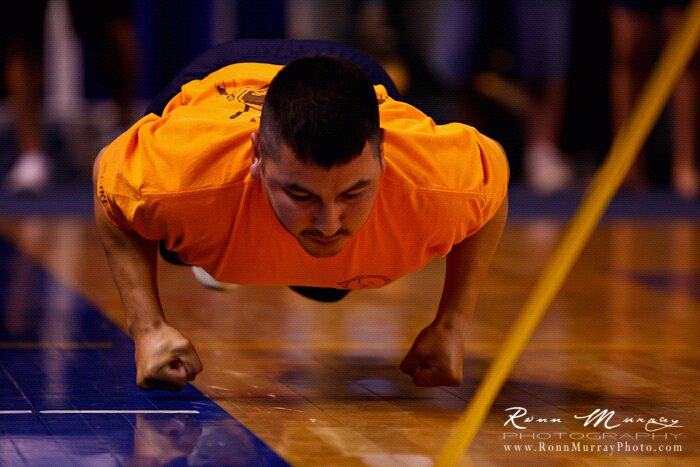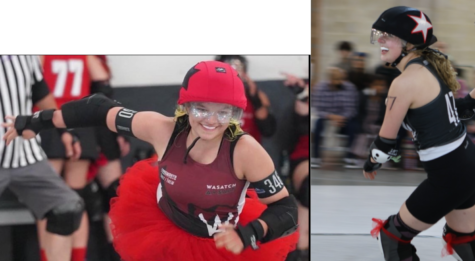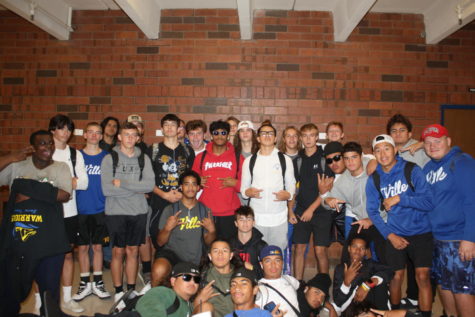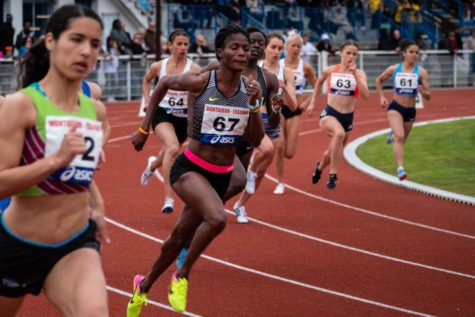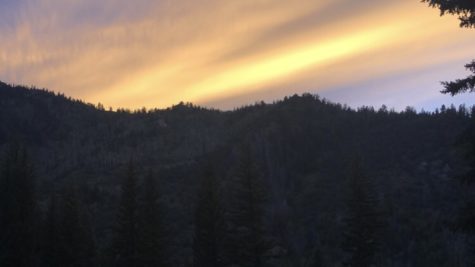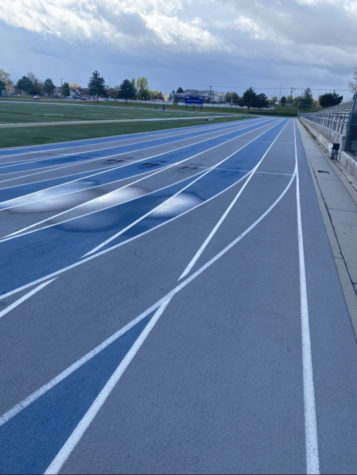WEIO diversifies competitive sports
World Eskimo Indian Olympics gathers Native populations
An athlete participates in the knuckle hop competition during the World Eskimo Indian Olympics in Fairbanks, Alaska
The World Eskimo Indian Olympics is an event to determine who has the most strength, speed, endurance, balance and pain tolerance. The first World Eskimo Indian Olympics (WEIO for short) was held in 1961 in Fairfield Alaska. Every year, this grand event runs for four days July in the Carlson Center.
The opening ceremony of WEIO welcomes the athletes, friends, family and visitors. It starts off with a traditional Alaskan Native American dance and prayer by a medicine man, who blesses the participants to do well in their events. After the opening ceremony the events begin.
Events in WEIO are not like the Olympics millions watch every four years on TV. The sports and games exhibited are traditional Native American activities dating back thousands of years. They include the knuckle hop, four man carry, ear weight, ear pull, drop the bomb, one foot and two foot high kick, Alaskan high kick, toe kick, one hand reach, kneel jump, Eskimo and Indian stick pull, arm pull, and finally the celebratory nalukataq (blanket toss). These sporting events used to determine the best warriors.
The most popular sports in WEIO are the one and two-foot high kicks. The high kicking events require the athlete to jump, kick a suspended object, and land on the floor, which exhibits balance to the officials. Traditionally performed in the coastal whaling villages, these kicks were used as a form of communication. When another game or whale hunting was taking place, a messenger would run to the village. When the messenger was within sight of the villagers, he or she would jump and kick both feet into the air, telling the villagers that there was a game taking place or whale being caught. Villagers would gather for the game, or hunters would prepare to help bring in a whale, respectively.
Other popular events are nalukataq (blanket toss) and drop the bomb. The nalukatuq is usually held in June. This event was historically designed to have fun after a successful whale hunting season. The whaling crew would throw treats out to villagers from the blanket. This tradition caught the eye of many tourists visiting the Inuit community. So, many re-enact the blanket toss for fun. The blanket is made out of an old whaling skin boat or made with bearded seal skin. It has holes on the edges so that rope can be looped through and used for handle grips. One person gets in middle of the blanket and stands there while being tossed with coordinated effort on behalf of the pullers. The person being tossed can get tossed as high as 20 feet or more! The successful jumper lands on his or her feet without falling.
Drop the bomb is an event to test the person’s ultimate strength, lying chest down on the floor at the starting line the athlete will extend their arms out and legs together. (airplane form) Volunteers will pick up the athlete at a paced walk until the participant “drops the bomb” dropping the bomb is when the athlete can no longer support their own weight, Athletes are required to have their back straight and buttocks low, athletes will be warned up to three times to correct their form, a designated measured distance will be marked on the floor, athletes are given one chance to be carried and hold their form for the longest distance.
Erica Meckel, a 29-year-old from the Nulato tribe, trains for and has been competing in the WEIO for 11 years. She said she first became involved when “a woman at the University of Alaska was putting on the northern Inua show and needed performers. She knew I had been a gymnast and thought that I would be good at it. When she first called me I was not interested, but after calling me multiple times over the span of a month I finally gave in and decided to try it. After the first two weeks, I was in love with it. And, I haven’t stopped doing it ever since!”
Some of these athletes have been practicing these events for almost their whole lives. Kyle Khaayak’w Worl from Anchorage, Alaska has been training since he was 9 years old. “My mother was an athlete for WEIO. So, she would tell me the story behind all of these events. I would practice at the Inuit cultural center when I was younger. They had a ball hanging from the ceiling and I would jump as high as I could to touch it with my feet. A WEIO athlete came up to me to show me the correct way, and since then I’ve been training hard!” Kyle joined WEIO when he was 18.
But, WEIO is more than just sporting events. There are sewing and butchering events. This shows who could supply the village with food and clothing. Kyle’s mother, who is also from Anchorage, used to be a WEIO athlete, but now participates in butchering events. “I have been in WEIO for about twenty six years,” she said. “I quit for awhile because I was pregnant with Kyle. At that time, I noticed I was getting old and that I couldn’t do half the events. So, I decided to do fish cutting and seal skinning.”

